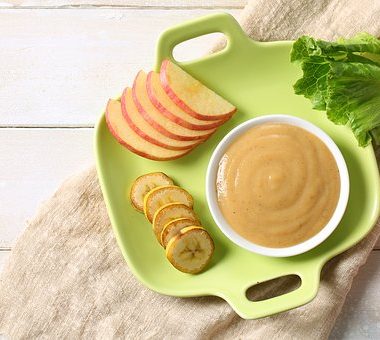Weaning your baby off breast milk is no doubt a big step that comes after the six-month exclusive breastfeeding period – which is the recommended time according to leading medical bodies including the World Health Organization.
The process, however, can be anything for both mother and child; exciting for a mom who’s about to stop her baby from latching on anywhere and everywhere, and unfamiliar for the child who just wants to eat as much as there is to be eaten. Or by a twist of nature, the reverse could be the case. Some moms agree that they experience a feeling of sadness at the sense of disconnect that comes with weaning a child off milk while some babies seem ready to get on with all the amazing foods that life has to offer. What a world!
Either way, don’t let it get you bummed out. Weaning doesn’t have to be distressing and as MVPs that we are at Pregnant and Perfect, we’re here to help you out!
We present to you a simple guide to help your baby transit from an exclusive breast milk diet with as much ease as possible.
First off, what are the tell-tale signs that your baby is good to go for other foods?

Before you push your baby into the #foodie gang, check out for the following:
- Ability to sit up without support (this may be an indicator of the control of neck muscles)
- Can hold food on the tongue without pushing it right out
- Opens the mouth when you try to feed him or her
- When your baby begins to mouth every toy and anything within reach
- Loss of interest in nursing/Significant increase in appetite and desire to share in others’ meals.
Paediatrics experts stipulate two approaches to weaning: mother- and child-led weaning. These simply point to the initiator of the weaning process.
While you don’t want to rush your baby into weaning (as every child arrives at this point in their own time), you may also take the initiative to gently test the waters. This is done through a gradual weaning process that extends over a longer period and involves introducing other foods while the baby is still taking breast milk.
Now that your child shows responsiveness to getting off the milk, how do you get it done?
- Skip a session. This is like a surprise party that your baby is not expecting. Begin by substituting one of the nursing times with expressed breast milk or formula – anything other than what your baby anticipates: the all-natural nursing.
- Set a routine. Choosing a particular spot around the home can help communicate that things are changing.
- Reduce time spent nursing. Halve the time spent on feeding, say 10 minutes for what was once a 20-minute feeding session. Doing this helps to severe the tie between your baby and breast slowly but surely. That’s the ultimate goal now, isn’t it? However, ensure to complement this shortage with ample snacks – basically, other foods which you want the child to eventually adapt to.
- Incorporate distractions. This is usually a goldmine for older children. Keeping your child engrossed with different activities will help you get him or her off your chest, literally, in the meantime – and for the longer haul.
- Introduce one meal per time. This is to help you accurately monitor the possible outcomes of each type of food you administer. These could include diarrhoea, change in faecal colour, a rash or vomiting.
When the #foodiegang is now in full force, the question is what do you feed your baby with?
Great news, your baby is now accustomed to other foods apart from breast milk and they’re super excited to explore different meals and tastes (like, dear baby, that’s the whole point of this!). But even at this point, it’s easy to worry over such things like ‘Will my baby be getting the right amount of nutrients?’, ‘My child is a picky eater. What on earth can I feed him (or her)?’
The truth is this: even a the point of taking only breast milk, infants require an additional source of Vitamin D according to the Centres for Disease Control and Prevention (CDC).
Therefore, worry not.
Begin by trying out single-grain cereals – rice cereal, oatmeal or barley, fresh foods (cooked without salt or seasonings), fish (CAREFULLY deboned), eggs, fruits, and pureed veggies. In fact, for fish especially, it is advised that you chew it first to the tiniest bit -also to confirm there’s no bone in them before giving to your child.
Ensure that everything going into your baby’s mouth is well-cooked, blended, processed and hazard-free. Remember that babies’ immune system are tender and prone to allergies or any badly handled food.
Also, to prevent choking, ensure that you only give your baby soft, mashed and easy-to-swallow foods and NOTHING that requires chewing.
At this point, it is allowed to introduce water into your baby’s diet but juices are a No-No.
What excites you the most about weaning? For us, it’s got to be the fact that babies make the most precious faces when they taste something new which they love. Oh, the blessing!
- How Setting Postpartum Boundaries made me lose my brother - February 6, 2025
- How To Revive Your Sex Life After Baby - October 17, 2023
- The Sona App Aims To Make Your Child “Sleep Like A Baby” And We Tested It - May 14, 2023








